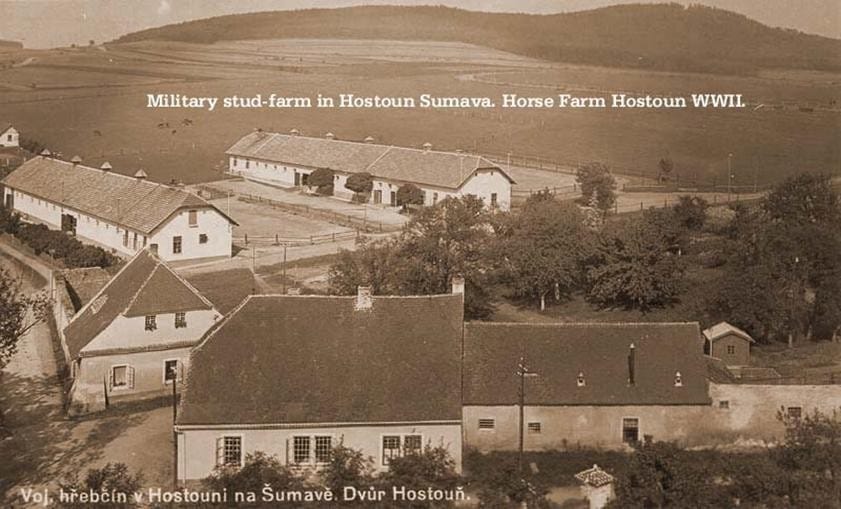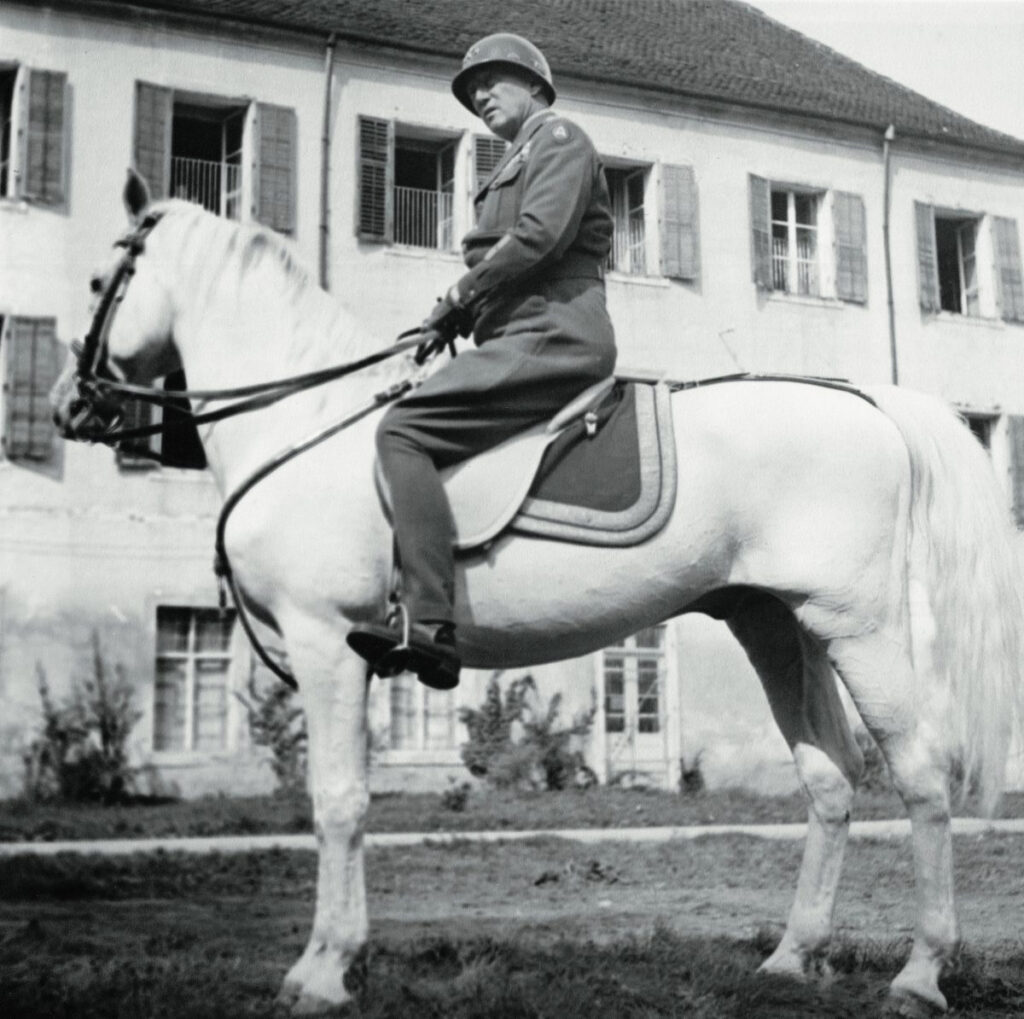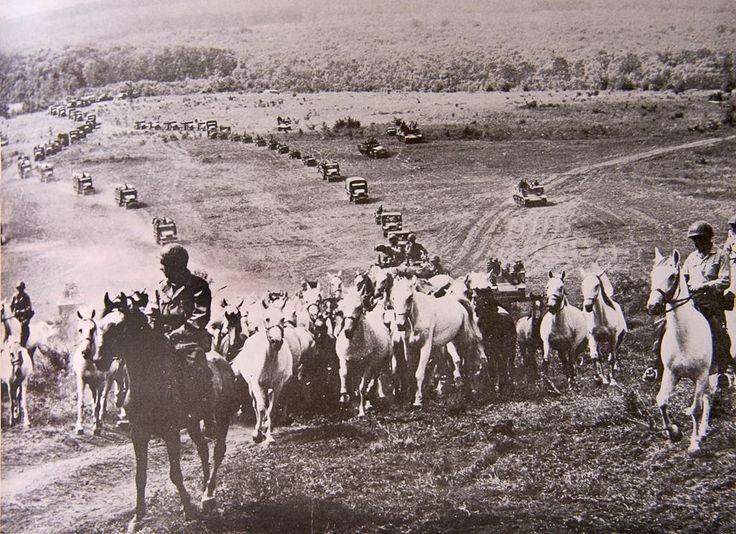By Dallas Looney
War is a dreadful affair, where soldiers’ and civilians’ lives are forever changed through brutality and destruction. Yet even within this dire reality, opportunities sometimes arise for soldiers to engage in more than just battle.
Operation COWBOY represents one of these hopeful moments in U.S. Army history. It was an operation unlike any other, which pitted the love of a cherished breed of horses known as the Lipizzaners against the horrors of a global war. Nazi ideology had become infatuated with eugenics and the idea of Germans as an Aryan “master race.”. While most are keenly aware of the human experimentation conducted by Nazi doctors such as Josef Mengele, fewer might be aware of the experiments conducted on animals to create an “Aryan” breed of various animals.
The Lipizzaners, in particular, were under experimentation by the Nazis to create a particular race of the horses that fit the state definition of Aryan’, a pseudo-scientific nomenclature that meant very little in reality. Nazi leaders issued orders to transfer veterinarians and a Wehrmacht detachment from the Spanish Riding School in Vienna, Austria, to Hostau, Czechoslovakia. These veterinarians conducted their experiments through selective breeding, while the training regimen for the horses was headed by the leader of the Spanish Riding School, Alois Podhajsky, had participated in the 1936 Summer Olympics and was an officer in the Wehrmacht (after previous service as a colonel in the Austrian Army), but was spared the horrors of war while he supervised the Lipizzaner program.

This photograph shows the military stud farm in Hostau, Czechoslovakia, where Nazi veterinarians experimented on the Lipizzaners. (U.S. Army)
The war progressed as the Lipizzaner breeding program continued until the critical year of 1945. The final year of the war could best be described as an apocalyptic sight throughout much of Germany and its conquered territory. While Adolf Hitler insisted that Nazi Germany fight to the bitter end, millions of soldiers and civilians faced the harsh reality of clinging onto a stubborn last stand against an overwhelming force of Allied advances, with the Soviet Red Army from the east and American, British, Canadian, and French from the west. .
Recognizing the danger of strategic bombing and its effects upon the German infrastructure, Podhajsky had evacuated what remained of the Spanish Riding School to the new site in Hostau, Czechoslovakia. Yet the war had little concern for the prestigious horses or their plight. Rampant starvation, disease, and the encroaching military forces upon either flank of Germany and Austria created an environment of desperation within the experimental school.
Desperate refugees suffering from starvation often attempted to raid the site to steal the valuable horses for their meat. Furthermore, crippling morale amongst the Wehrmacht personnel stationed at the farm only exacerbated the challenges as soldiers anxiously observed the distant advance of the Red Army sweeping across Eastern Europe. The Soviets were of a particular worry to the Wehrmacht, as years of brutal warfare conducted by Nazi Germany had made the Soviets eager for vengeance upon the once-powerful Third Reich. The Red Army advanced at an accelerated pace requiring large amounts of food for their soldiers. The general fear amongst the site was that the Lipizzaners would be slaughtered for their meat by the Soviets, who would not recognize the value the horses had beyond their utility as food for hungry soldiers.
As the Red Army advanced eastward, American forces of the U.S. Third Army, under the command of General George S. Patton, marched into Czechoslovakia from the west. The Americans were known to be less harsh on Wehrmacht prisoners-of-war. In addition, Patton had a direct connection to the Lipizzaner situation.
Patton had previously competed against Alois Podhajsky for the equestrian events in the Olympics, and learned of the Lipizzaners’ location, as well as Podhajsky’s command of the site. The staff at the Lipizzaner farm desperately appealed to Podhajsky to negotiate with the Americans as they feared the Soviets would slaughter the horses upon their capture. Luck would have it that a Luftwaffe intelligence officer, Lieutenant Colonel Walter Holters, had been stranded at the farm because of Germany’s increasingly dire supply shortages. After a brief debate amongst the Germans stationed at the farm, Holters agreed to contact the nearest U.S. Army unit and draw up terms of surrender.

General George S. Patton atop a Lippizaner stallion in Austria,1945. (National Archives)
The 42d Cavalry Reconnaissance Squadron (Mechanized), 2d Cavalry Group (Mechanized) was contacted shortly after with the request to save the horses from the advancing Red Army. Had these horses been mechanical tanks, the request might have been ignored but horses had a proud and prestigious reputation amongst cavalrymen well before they set foot in mechanized vehicles. Colonel Charles H. Reed, commander of the 2d Cavalry Group, was particularly fond of the horses, and so Operation COWBOY was launched. Since speed was important was decided that a smaller, lighter force might be best to penetrate the German defenses along the Czech border. The Americans organized Task Force Andrews, commanded by Major Robert P. Andrews, and consisting of multiple M8 scout cars, two M24 Chaffee tanks, M8 howitzer motor carriages, and upwards of 325 soldiers.

Task Force Andrews guides the valuable Lipizzaner horses away from Hostau. (U.S. Army)
To penetrate the German lines, XII Corps unleashed an artillery barrage to soften up enemy resistance. This allowed Andrews and his task force to breach the German lines and take control of the facility. While capturing the facility, the Americans now faced a rather difficult situation. There were far more than 325 horses at the facility, and as such, Major Andrew and his deputy, Thomas M. Stewart, decided to use the German soldiers at the facility along with nearby liberated POWs of many Allied nations to assist in the extraction of these horses and save them from certain death. All German troops who were to be armed had to pledge to serve under U.S. authority, which found little resistance as most feared the retaliation that was coming from the Soviet Red Army.
During the rescue of the horses, the farm twice came under attack by fanatical Waffen-SS troops, leading to casualties on both sides. Eventually, however, the approaching threat of the Red Army ceased further German resistance. Having lost men and valuable resources, Captain Thomas M. Stewart, now in charge of the task force as Major Andrew’s second-in-command, hurried the horses along in a desperate attempt to return to friendly lines. Many of the horses at the time were pregnant and, as a result, were often rather unwilling to cooperate with efforts to evacuate them. Cavalrymen mounted up on many of the horses, loaded them into vehicles, and, with the rest of the animals, herded them into a massive column formed by the U.S. task force and evacuated the precious Lipizzaners back to Allied lines.
Various historical accounts reference the arrival of Soviet troops as the Americans made their way out of the facility with the precious Lipizzaners. In the end, a combined force of Allied POWs, American soldiers, German military personnel, and civilians helped save the valuable Lipizzaners. This unique story remains an ever-present and admired historical moment during a war that stretched across the globe. So inspiring was this story that the Walt Disney Company opted to make a film (with, of course, all the measured extra Hollywood flair) called Miracle of the White Stallions in 1963. Today, it remains a poignant story for all who enjoy both U.S. Army and equestrian history.

